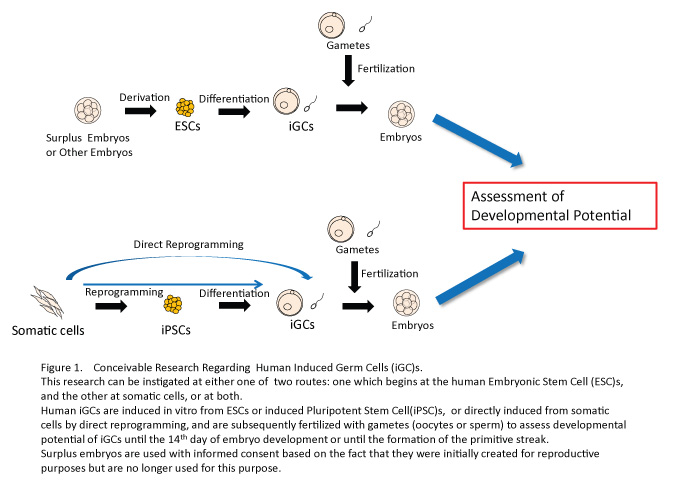Research on human induced germ cells: A scrutiny of the ethical and legal issues and regulatory frameworks
Research Press Release | August 08, 2013

| Press Release | ||
|---|---|---|
| Key Points |
– Insights into the justifiability of embryo creation by using human induced germ cells that are derived from iPS or ES cells. – Survey of the content and methods of the regulations of research on human embryo creation in 17 countries, and identification of Japan’s international standing. – Conclusion: embryo creation using induced germ cells may be permitted in exceptional cases as a final evaluation in preclinical research for the purpose of the application of assisted reproductive technology (ART). – Even in such cases, however, measures are required to ensure that human embryos are respected as emerging human life. |
|
| Overview |
The establishment of techniques to induce human germ cells from pluripotent stem cells such as ES and iPS cells would have a huge impact in areas including human embryology and Assisted Reproductive Technology (ART) and diagnosis. When these cells are brought from the bench to the clinic, however, this would give rise to issues of two different dimensions. The first issue is that the fertilization of induced germ cells to create an embryo and experiments to evaluate its developmental potential pose unavoidable ethical questions, even in the context of research on its application to medical treatment. In this study, we have considered that in exceptional cases embryo creation may be essential to ensure the safety of children born as a result of ART using induced germ cells. Even in such research, however, embryos must be respected as emerging human life. In a survey of related regulatory systems worldwide, we have found that Japan has pioneered the consideration of regulatory frameworks for such research, but the regulatory systems of Australia, Belgium, Canada, Denmark and the UK may be informative, should Japan consider relaxing its current prohibition on the fertilization of induced germ cells. The second issue concerns the potential for ethical issues and social confusion should clinical applications proceed. We have considered these issues separately for cases in which induced germ cells are provided to others as donor gametes, and in which they are used for the reproduction of the couple concerned. Although induced germ cell technology has the potential to resolve some of the issues arising from the use of donor gametes in present-day ART, it may make other problems more difficult. Multifaceted, in-depth discussion is required ahead of the development of research. |
|
| Inquiries |
Tetsuya Ishii, Specially Appointed Associate Professor, Office of Health and Safety, Hokkaido University TEL: 011-706-2126 e-mail: tishii@general.hokudai.ac.jp |
|
| Publications |
Cell Stem Cell 2013 (Aug 1;13(2):145-8) |
|
